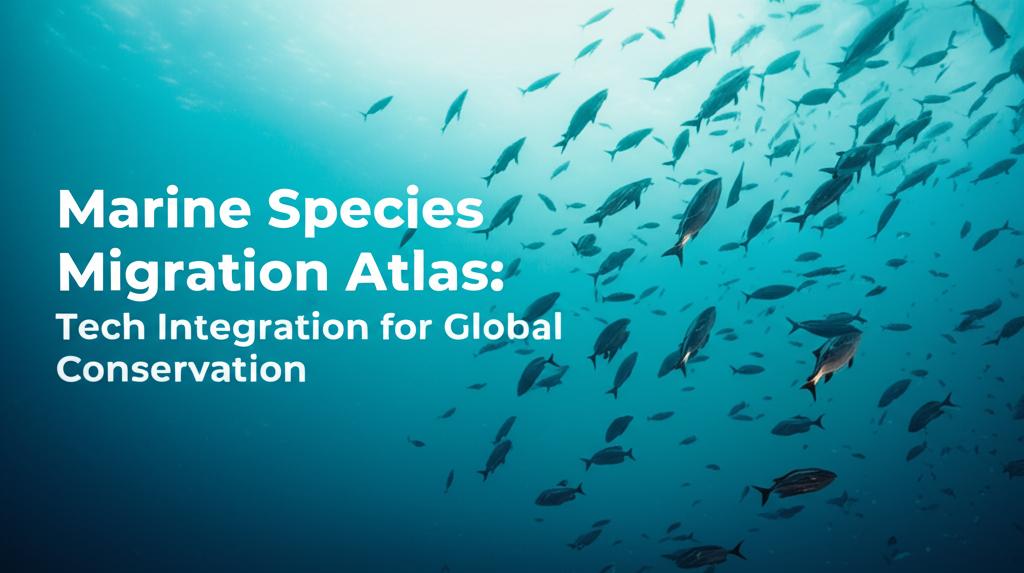The vast expanses of our oceans host intricate highways of movement, as marine species undertake remarkable migrations crucial for their survival. Understanding these journeys is paramount for effective global conservation, and technology is now at the forefront of this endeavor. The development and enhancement of Marine Species Migration Atlases, powered by cutting-edge technological integrations, are revolutionizing how we protect these vulnerable populations and their critical habitats.
Historically, tracking marine life was a formidable challenge, often relying on rudimentary methods. Today, a suite of sophisticated technologies provides unprecedented insights. Satellite telemetry allows researchers to follow animals across entire ocean basins in near real-time, with miniaturized tags now suitable for a wider array of species, from large whales to smaller sea turtles and fish. These tags transmit location data, and often environmental parameters like temperature and depth, offering a comprehensive picture of an animal's journey and the conditions it encounters.
Acoustic telemetry complements satellite tracking, particularly in coastal and densely populated areas. Networks of underwater acoustic receivers listen for tagged animals passing by, creating detailed maps of movement within specific zones. This technology is invaluable for understanding site fidelity, residency patterns, and the use of specific corridors, especially for species that may not surface frequently enough for satellite tagging or are too small for current satellite tag technology.
The integration of biologging sensors with these tracking devices has further enriched the data collected. Modern tags can record heart rate, acceleration, feeding events, and even capture video, providing a glimpse into the behavior and physiological responses of animals during their migrations. This multi-stream data is crucial for understanding the energetic costs of migration and how environmental changes might impact their success.
At the heart of modern Marine Species Migration Atlases is the power of big data analytics, Artificial Intelligence (AI), and Machine Learning (ML). The sheer volume of information generated by widespread tracking initiatives requires advanced computational tools. AI algorithms can identify complex patterns in movement data that might be invisible to the human eye, predicting migration routes, identifying previously unknown congregation areas, and assessing how factors like sea surface temperature, ocean currents, and human activities influence migratory behavior. ML models are continuously refined, improving the accuracy of these predictions as more data becomes available.
Cloud computing platforms have become essential for storing, processing, and sharing these immense datasets. They facilitate collaboration among researchers, conservation organizations, and governmental agencies across the globe, breaking down data silos and fostering a more unified approach to marine conservation. These platforms often host interactive atlas interfaces, allowing users to visualize migration tracks, overlay them with environmental and human impact data, and extract information relevant to specific conservation challenges.
Furthermore, environmental DNA (eDNA) analysis is emerging as a powerful, non-invasive tool to complement direct tracking. By detecting trace amounts of genetic material shed by animals into the water, scientists can infer species presence and distribution along potential migratory pathways, even without physically tagging individual animals. This is particularly useful for elusive species or for broad-scale biodiversity assessments.
The impact of these technologically advanced atlases on global conservation is profound. They are instrumental in identifying critical habitats – such as breeding grounds, feeding areas, and migratory corridors – that require protection. This evidence-based information underpins the designation and management of Marine Protected Areas (MPAs) and helps to inform an ecosystem-based approach to fisheries management, reducing bycatch and mitigating conflicts between human activities and marine wildlife. These atlases also provide vital data for understanding and predicting the impacts of climate change on species distributions and migration timings, enabling proactive conservation strategies.
Despite these advancements, challenges remain. Expanding tag longevity, reducing tag size and cost, and ensuring reliable data transmission from the deep ocean are ongoing technological hurdles. Addressing data gaps, particularly for understudied species and remote ocean regions, is also critical. Continued investment in research and development, fostering international collaboration, and promoting open data principles are key to overcoming these obstacles.
In conclusion, the integration of diverse technologies into Marine Species Migration Atlases represents a paradigm shift in our ability to understand and conserve life in our oceans. By transforming raw tracking data into actionable conservation intelligence, these dynamic tools are empowering a global effort to safeguard migratory marine species and the oceanic systems upon which they, and ultimately we, depend. The journey to comprehensive marine conservation is long, but with technology as our ally, the path forward is clearer than ever.

